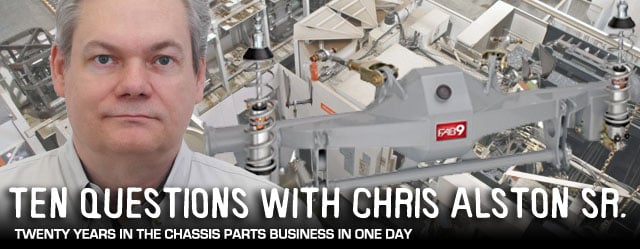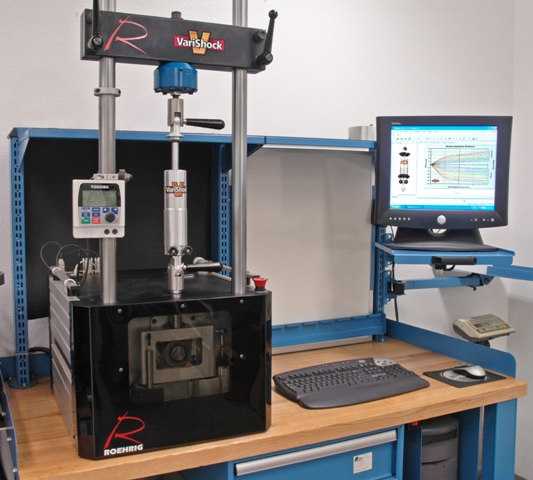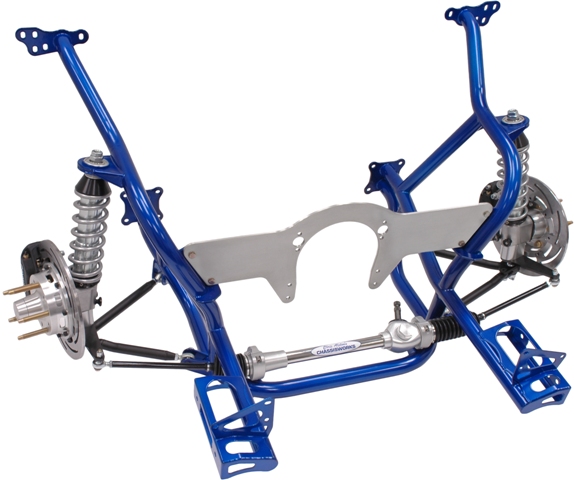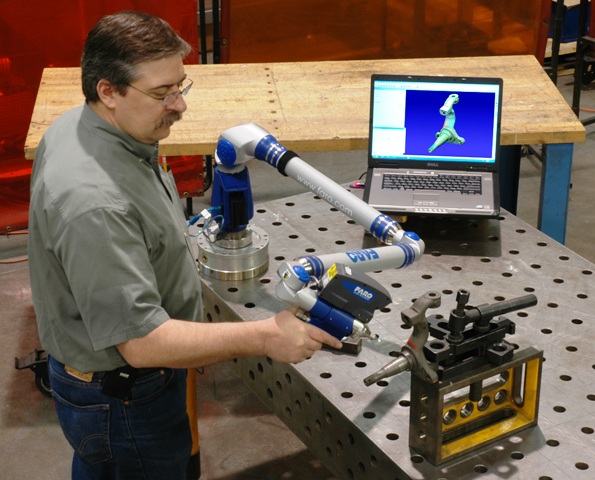Ask around in the business and you’ll hear Chris Alston, Sr. called a lot of different things: innovator, leader, inventor, opinionated, strong-willed, and probably a few more terms not often heard in polite conversation, but “boring” is definitely not on the list. More than twenty years after setting out on his own to found Chris Alston’s Chassisworks, he’s currently at the helm of a business that dominates multiple sectors of the aftermarket, and he did it without compromising his core belief in building and selling products he’s proud of, and nothing else. We recently got the chance to talk to Alston (though to be honest he did most of the talking) and find out what’s on his mind.
Dragzine: Everybody knows you now for the company that bears your name, but you actually started out in the racing aftermarket long before you started Chassisworks. How did all that get started, and why did you end up striking out on your own?
Chris Alston, Sr.: “It’s a great story. I started a business with my brothers in 1975 called Alston Racecar Engineering. In 1987, we had a thermonuclear, ugly divorce that revolved around the fact that we had extremely divergent personalities, needs, and wants. It’s difficult to keep them all focused on the same thing. We were the most successful chassis parts builder, ever. And after 12 years of working like dogs to become so successful, peoples’ priorities changed. Personal stuff that should have been left at home, it all percolated up to the top.
We started that company as very young men, not understanding that partnerships are hard to hold together. The fact that it was so successful and lasted so long was a miracle. But at the time you just wonder why it’s not working. You do something for a long time and your priorities in it change. Basically what happened was that the two brothers who worked there (the third was a silent partner), myself and my older brother, we don’t see eye to eye on a lot of things. But it was an excellent combination because he was a very good promoter and knew how to sell stuff, and I am basically a mad scientist and invented just a phenomenal amount of things in the drag race world that are industry standards. That was a real good combination, but as you get successful and get money, some people lose sight of where they came from and what their contributions were. As I grew up, I spent a lot of energy figuring out what my brother did that was important to the company. So I had some understanding of what he did and had some respect for it. But he never spent any time trying to figure out what it was that I did in my part of it.
I basically ran the entire daily operation, I invented all of the stuff, and I was responsible for manufacturing it. His contribution was that he was responsible for selling it. I learned how to sell parts, but he never learned how to manufacture them. You know how when you look at something you don’t understand, it looks easy? He never had any respect for my unique skill. He never realized that the success was a combination of incredibly cool products manufactured in a way that they were affordable, coupled with a strong selling method. A very substantial rift opened between us and I left in 1987.
I started my own company doing the exact same thing, and we ended up as the kind of competitors where we couldn’t even cross each other’s path in the hall – that kind of thing. It was just bad. Really bad. So here we are 23 years later, and I still own the largest manufacturer of chassis parts in the country and they went bankrupt 15 years ago. So that’s my version of the story.”
DZ: The Chassisworks catalog has evolved quite a bit over that time, from mostly hardcore drag chassis parts in the beginning to a lot of bolt-on and street-oriented items today. Was that an intentional thing, or just the way market demand took you?
Chris Alston, Sr.: “We always built drag race cars and Pro Street cars. It’s really comical to me that people think Pro Touring cars (and I hate that phrase, by the way) are a new thing. Cars were built to handle years ago, and personally I built Trans-Am cars, so I understand that market. But Pro Touring cars were just a natural growth from Pro Street – completely hand-built cars, and in the old days people just wanted them to accelerate, but they had to be really fast and stop really good, and now you expect them to turn, too. It isn’t some brand new thing. It isn’t even a monumental shift. We built cars like that in the late 70’s. It’s just that what has really happened in the market is that the whole awareness of the musclecar is based entirely on the fact that as people get older, you want what was cool when you were in high school. The whole Pro Touring/G-machine market is the 100 percent natural progression of the aging of the marketplace. Those are the people who would have built street rods if they were 15 years older. But the problem is that if you grew up with 60’s muscle cars, you have no affinity for a ’32 Ford. That’s just an age-driven thing. So there already was an established market to completely build everything on a car, and as the market desire moved to muscle cars, people think it’s a new market segment? It’s the natural progression of the street rod market.”
DZ: So that explains how the core business got started, but it doesn’t really explain how you got into so many different markets – making shocks, doing exhaust, all the different race, street, and truck stuff. What’s the story behind that?
Chris Alston, Sr.: “Every brand we have is the direct result of a giant problem. You can imagine that if you were the largest chassis producer over several market segments, you’d have a phenomenal need for shock absorbers. We use thousands of shock absorbers a year just in our own products, and we have some really unique requirements that a shock absorber manufacturer could care less about. I want to be able to offer different valving sets in shock absorbers that are the same size, and I want different kinds of mounts – a lot of them that you’ve never seen anywhere but in our product line. I want to be able to have bases that are different, that have extensions machined in them to help clearance. And the manufacturers are like, “We don’t make that!”
We were working with an American shock manufacturer, and we were by far their largest aftermarket customer for this one specific shock they made. They got up one day and redesigned it, and never bothered to call me. Somehow a quarter inch of travel had magically disappeared. Their attitude was that it didn’t really matter, but it mattered a lot to me because that was one of the coolest things about it was that it gave us more front end travel than anybody else. Now, it still does, just not as much as it used to, and they didn’t give a damn. So I filed that away, and getting into the shock absorber business went from being number seven or eight on the list to being number one.”
DZ: Is that something that happened a lot, where you got into those different areas to get control of what components were going into your products?
Chris Alston, Sr.: “People don’t understand that in the automotive aftermarket, the parts you buy constantly change. I’ve been subjected to this way too many times. I’m buying a caliper from this guy, and now it doesn’t fit because they changed something. I’ve had that happen with every part we buy from another company in our industry. They decide to change something, sometimes improve it, but usually just make it for less money, and that kind of thing makes a guy like me crazy. If you buy a chassis from anybody else, what you get is some welded up tubing and a bunch of stuff that they bought from somebody else that goes on it. If all those vendors are constantly changing and modifying their stuff for whatever reason, eventually parts don’t fit on your car any more.
So I want to make a front clip, and I decide that I want to use a particular rack, and I am buying it from some other company. Time marches on, and that company goes out of business, or he has to lower his price because his competitor has gone to China… A perfect example is the Pinto rack, which is on everything. The original Pinto was the first real American car with rack and pinion steering, so they promptly dried up. Some enterprising person found out who made the racks for Ford in Europe, and got them to make racks for them. They were nice, as nice as an OE rack can be, and they were selling them and doing OK, but then some weasel decided “hey, we can sell racks too, but since the factory will only sell them to one guy, we’ll find somebody else to make them.”
The quality of the rack headed down, and a few years later, there are even more competitors, and you’ve reached a point where you can buy a Pinto rack at such an unbelievable price that you wonder how the hell they can even make it for that, let alone get it over here in a box. When you start taking it apart and dissecting it, it’s just trash. In the gear world, there is a standard for gear quality, and the quality in these racks is worse than the lowest standard. The best part is that because they were overengineered in the beginning, and the gears are turning pretty slow, you’d never know it needs to be in the dumpster. So anyway, that’s why we started making racks. We make a high-end part. I don’t need a $119 steering rack. I need a nice one that’s a few hundred bucks, so we make one.”
DZ: Hot rodding and racing was built on stuff like that, though – taking OEM pieces, mixing and matching, and putting it to purposes the factory never intended. But you’ve taken the time to design and manufacture almost everything yourself rather than taking a parts bin approach when you could have. What’s the reason for that?
Chris Alston, Sr.: “Even a Corvette spindle is built to a price. You can’t race on it because the wheel bearings fall out. It’s a nice and top of the line for what you can get from an American automobile manufacturer, but it’s not top of the line in the car manufacturing world. We have literally hundreds of thousands of dollars invested in engineering software, and when you tell people that they just don’t believe that it’s true that you can spend that much on software to make parts.
We make a lot of stuff different from everybody else, because that’s the way they should be made. For the longest time, we were the only company that made brakes that didn’t make your track width wider than stock, because we put a lot of effort into it, or we made the spindle to go with them. That’s what you get when you buy from us. We’re extremely aware of the entire system and its configuration. Right now, if you buy a whole front suspension from us, we don’t make in our factory the actual coil spring, and we don’t make the calipers, and that’s because Bill Wood of Willwood and I go way back, and I don’t have much trouble with his stuff. Who else can even pretend to make that statement? Nobody.
We’re also the only manufacturer who can say that every part on our front suspension was designed by us, using new software in the last 10-15 years. We don’t have anything on our fronts that came on a car you could have bought from a dealer. There’s a huge reason for that. It’s extremely difficult to design all the little parts that the other guys can get from someone else, and that’s why they don’t do it.”
DZ: It’s easy to understand how you go from the chassis parts business to shock absorbers, but what about stuff like branching out into building your own headers and exhaust components?
Chris Alston, Sr.: “We use a phenomenal amount of exhaust components, plus so much of it isn’t made the way it needs to be made to fit good. The biggest problem I have, and the reason we make headers for our clips, is that most people make headers that drag on the ground. Well, why do they drag on the ground? It’s easier to make them like that. It all came down to the fact that we consume a lot of components, and we make them for two reasons – so we can get what we want, and so we can keep our customers’ cost down. It’s hard to mess with us on price, because we have very good control of manufacturing costs for an elaborate product. That puts us in the enviable situation of being able to sell a superior part for a similar price to something ordinary.
That’s not to say we don’t have any outside help – we have some companies that do machined parts and stampings, but they’ve been vendors for us since the stone age. But nobody makes as much of what they sell as we do. Things people don’t even think about. Chassisworks has, maybe 150 different custom boxes. It’s attention to detail. If you buy my part, it’s going to magically fit in the box we ship it in. It’s designed so that the part isn’t messed up when it gets to you. Those are the kinds of things we do that set us apart. Another example is that we’ve always had good instructions. If you buy our bolt-in rear suspensions, some of those are 30-35 pages long. Our bolt on front clip instructions are over 100. The biggest instruction sheet for a front clip my competitors have is 6 pages. We have 113 in one and 136 in the other. Not because we think people are stupid – if we explain exactly how it’s supposed to go on the car, exactly how to align it, exactly what all the options are, then you’re going to have a much better chance of ending up with something you’re proud of.
DZ: With as large as the business has gotten, most of it has to be cataloged, off-the-shelf parts now. Do you still do any one-off work?
Chris Alston, Sr.: “We do a ton of custom stuff, but we don’t really build cars – we make a lot of custom parts out of things we already make. We have a huge amount of custom rack lengths, stuff like that. One thing that we are really big in is making custom shock absorbers with different kinds of mounts. In the coilover world, you have basically two choices – you can get a spherical bearing or a poly bushing in it. We make about 15 different end effectors for shocks, and it’s all based on us needing a shock that did that. A huge amount of our shock absorber production goes private label to other companies because we’re really strong in making exactly what you want, without having to buy four billion of them.”
DZ: It’s been a rough couple of years for the entire aftermarket, and I’m sure Chassisworks is no exception, especially considering you’re kind of on the high end of the spectrum. How’s business lately?
Chris Alston, Sr.: “Because we are extremely diverse, parts of it are up, and parts of it suck. I wish that less of it sucked… It’s very difficult to be around as long as we have and still grow in a recession. Some guys can if they’re small and new, but it’s hard to grow if you’ve been around a long time and already have a huge part of the market because more of your customers go away when it goes bad than a guy who just started. Some segments of the market are in huge, just unbelievable trouble. I’ve been in business since the early 70’s, and this is my fifth recession. It’s probably going to be the worst one, and I think that if you’re under 30 and you’ve never lived in a down economy, or worked in one, you need to understand that it will get better. Some parts will come back, and some won’t. That’s just the way it is. But I think that all the companies that are going to be around are doing the same thing we are – making boxcar loads of new parts, moving forward the same way we do when things are good. Because eventually people will want to buy again, and you always have to be looking forward to the next big thing.”
DZ: Speaking of the Next Big Thing, how has the way you do business changed since 1987?
Chris Alston, Sr.: “The biggest change is the Internet. It’s amazing that you would believe something from somebody who you can’t meet and have never seen. You have to remember that every time you ask a question, you’re getting a reply from someone who’s willing to answer. Some of them are well qualified, but the vast majority are idiots. There’s no way to be an accredited “Internet Answering Man.” We get stuff forwarded to us from time to time where somebody’s had a problem with our product, and the question is always, “Where’s the part of this where he called us and we wouldn’t help him?” He never bothered to.
One of my favorite stories has to do with a guy who called in and was having trouble with his shocks. He calls up and says, “I was dumb and didn’t put the transport bags under my dragster and they got beat to death driving 1500 miles home, and I need to get them fixed.” I told him it was his lucky day, because I was going to give him the “you’re not a lying MF’er” discount and I would fix them for free. Some of these guys say, “I wasn’t doing nothing and the top fell off and all the oil came out!” and it’s caked in mud and grass and sand.”
DZ: Any new stuff on the drawing board you can tell us about?
Chris Alston, Sr.: “We’re really heavily involved in several things. We’re expanding our Ford products into the S197, 2005-up Mustangs. We’re making more bolt on clips for more years of Camaros. We have some full frame stuff for more of the middle-60’s cars that we’re working on. We’re expanding our rack and pinion line, and we’re actually developing a line of supercharger drives. We have this cute little thing with a gearbox in it that will let you attach your Procharger to the front of your engine and drive it that way rather than through a belt. We’re not the only company who makes something like that, but we needed one for one of our factory racecars. We actually make them for big block and small block Chevy, LS motors, and small block Fords right now. We don’t advertise them, and you have to kind of know somebody here to get one right now, but in a year it will all be finalized out and we’ll start advertising them.
We don’t normally talk about what we’re doing very often. A lot of guys say that they’re going to do something and then 15 years later, you can finally get one. By the time we talk about it, it’s done, or so close to being done that it’s practically the same.”
























